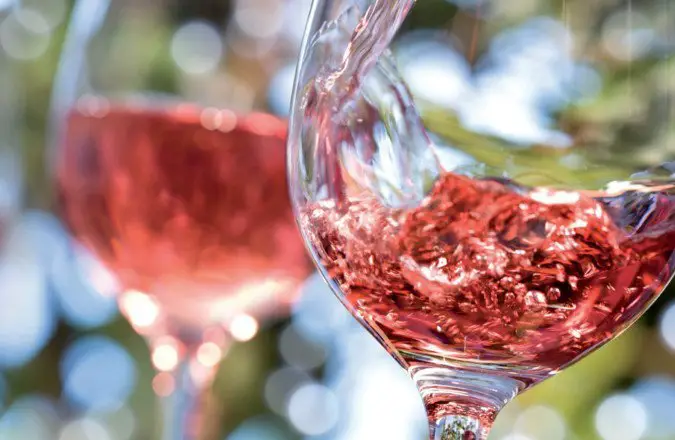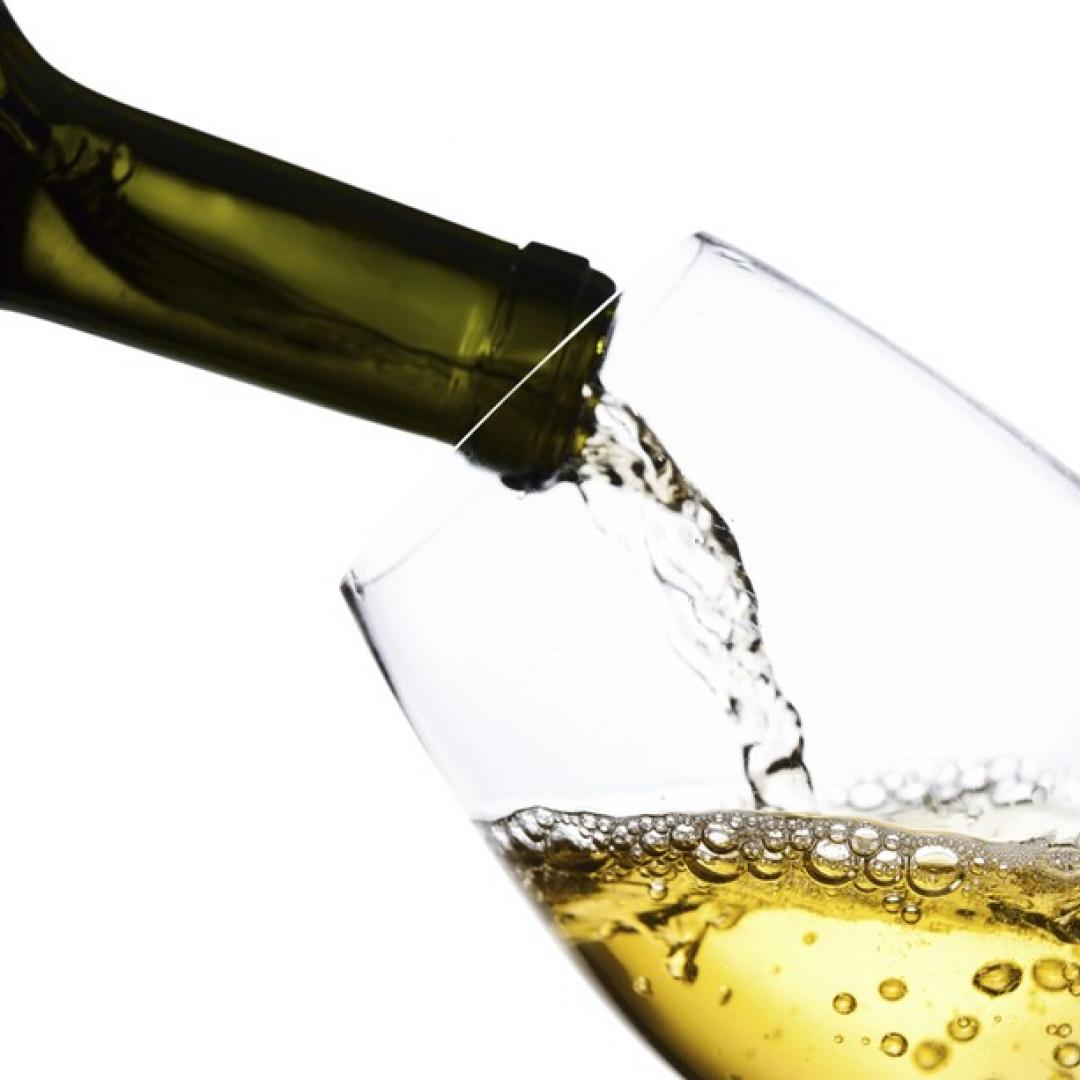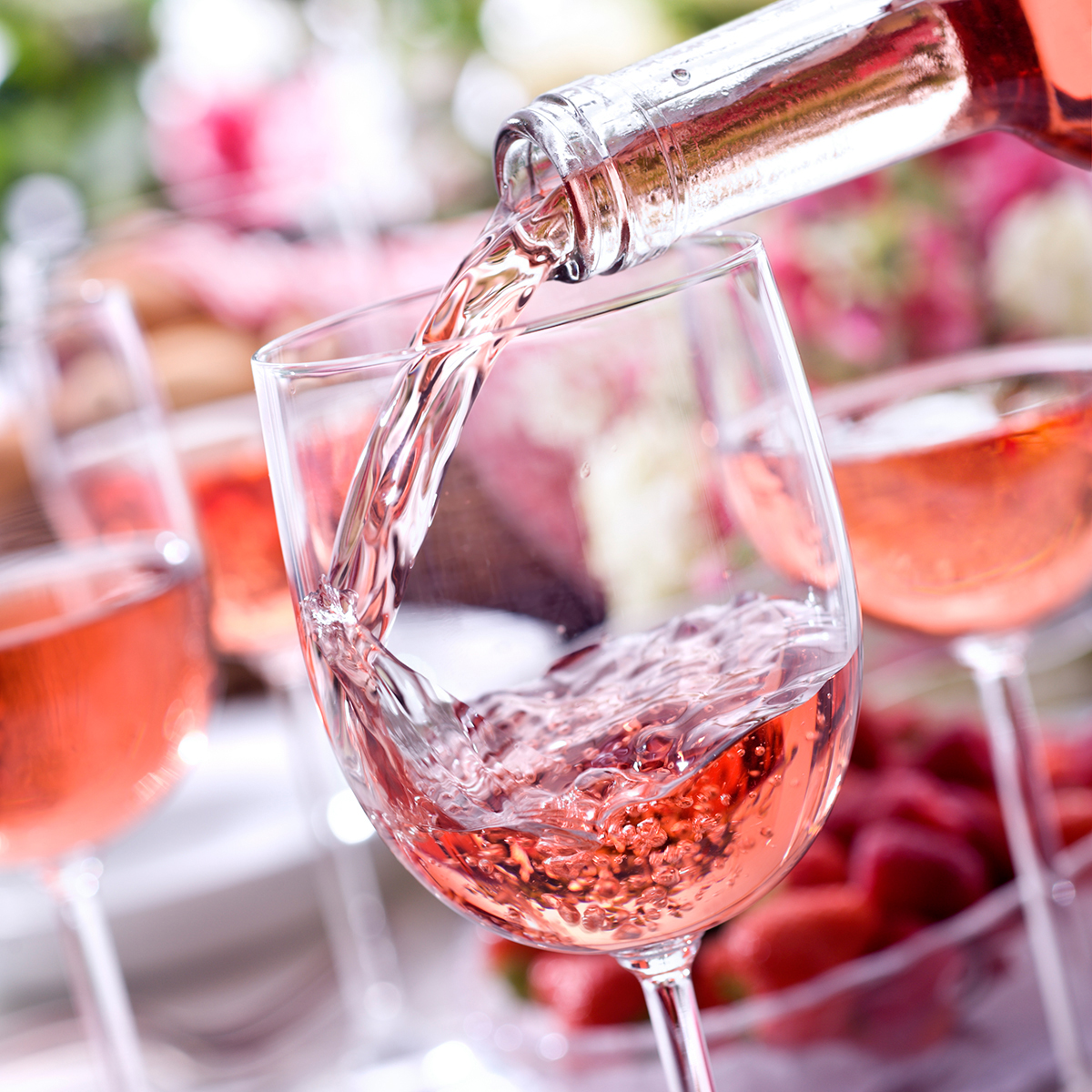rosé wine? Really? Yes, it is ideal for a summer or hot afternoon. It is famous in Europe for its fresh and fruity combination when you are drinking it. It has an exquisite aroma, taste and can be consumed as you prefer.
“A good wine is like a good film: it lasts an instant and leaves you with a taste of glory in your mouth; it is new with every sip and, as with films, it is born and reborn in each taster.” Federico Fellini.
En esta nota, encontraras lo siguiente
what is Rosato Wine?
Rosato wine or roseé wine comes from the south of France where it is manufactured, marketed and consumed, today, as the first choice for its wonderful color, aroma, flavor and easy pairing.
It is easily confused with claret; a variation of wine made from white and red grapes that when blended produce a color similar to rosé, which does not become completely dark or defined and which makes it very different in appearance, texture and essence from Rosato.
However, its elaboration process can be the same or similar to that of red wine, same technique, only that the union between the red grapes and the skins of this fruit come into less contact, which results in that unique color that defines it and makes it so different in the market and from which different shades are released.
Origin and history of Rosato Wine
Provence, Grenache, Syrah and Carignan are the most important wine producing provinces in France, this is due to their quality in the production of Rosé Wine for which they have become so famous and have remained in the market from generation to generation for the last years.
This industry started making this type of wine, which for a time was considered secondary, as it was believed to be of less value than red and white wine. 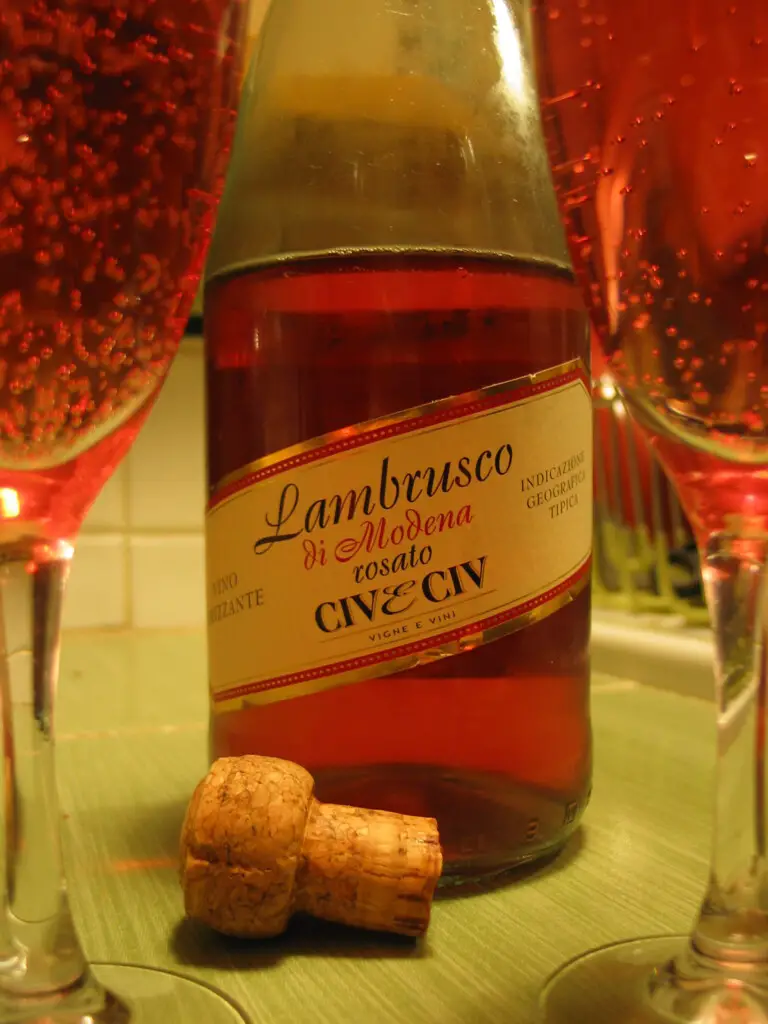 However, there were always those who bet to continue producing it in these French areas where the climatic and geographical conditions; soil, weather and water made a good cycle that in the end gave an excellent development of the fruit for the elaboration of Rosée.
However, there were always those who bet to continue producing it in these French areas where the climatic and geographical conditions; soil, weather and water made a good cycle that in the end gave an excellent development of the fruit for the elaboration of Rosée.
Nowadays, France is recognized worldwide as the emblematic country of Rosé wine. Years of experience in the industry, trial and error, have given its product a taste, smell and texture of all kinds, but the raspberries and strawberries stand out, which elevate its acidity and make it fresh.
However, the city of Bordeaux has also gained popularity for the production of Rosé wines in a darker range than the traditional, this is because they have sought to position themselves in the market as unique in their category and yes they have succeeded, the Rosée wine is ideal for the summer for the freshness they produce on the palate!
From this experience, dry, sweet and citric wines are produced, where its acidity, aroma and flavor vary according to the composition of its ingredients and elaboration, among its most common registers are: mint, sweet cherry, wild strawberry, red currant, tomato, strawberry and raspberry sauce and blood orange, rose, peony and red bell pepper.
Characteristics of Rosé Wine
The unique characteristic of Rosato wine is its fruity aroma and its freshness on contact with the palate, which has led it to be known throughout Europe as the Wine of Summer!
At present, thanks to new experiments, a better quality Rosato wine has been rediscovered with a changing register in terms of taste and smell.
It could be taken as another quality that for its elaboration it does not require a specific fruit, that is to say, it does not need to be extracted from a special grape, nor with special conditions, in fact, it can be elaborated with any variety of this fruit.
Among which the following stand out: Carignan, Grenache, Pinot Noir, Syrah, Tempranillo, Cinsault, Carbenet, among others.
Rosé Wine Color
As it is a combination of colors, it is difficult to establish a single tonality, that is, everything will depend on its elaboration, the fermentation time and the temperature during the maceration to which the fruit is subjected.
Although this type of wine has a natural color, coming from the grape skin, it will vary the more the grape skin remains in union with the juice in its pure state, hence it is classified as red, white or rosé. 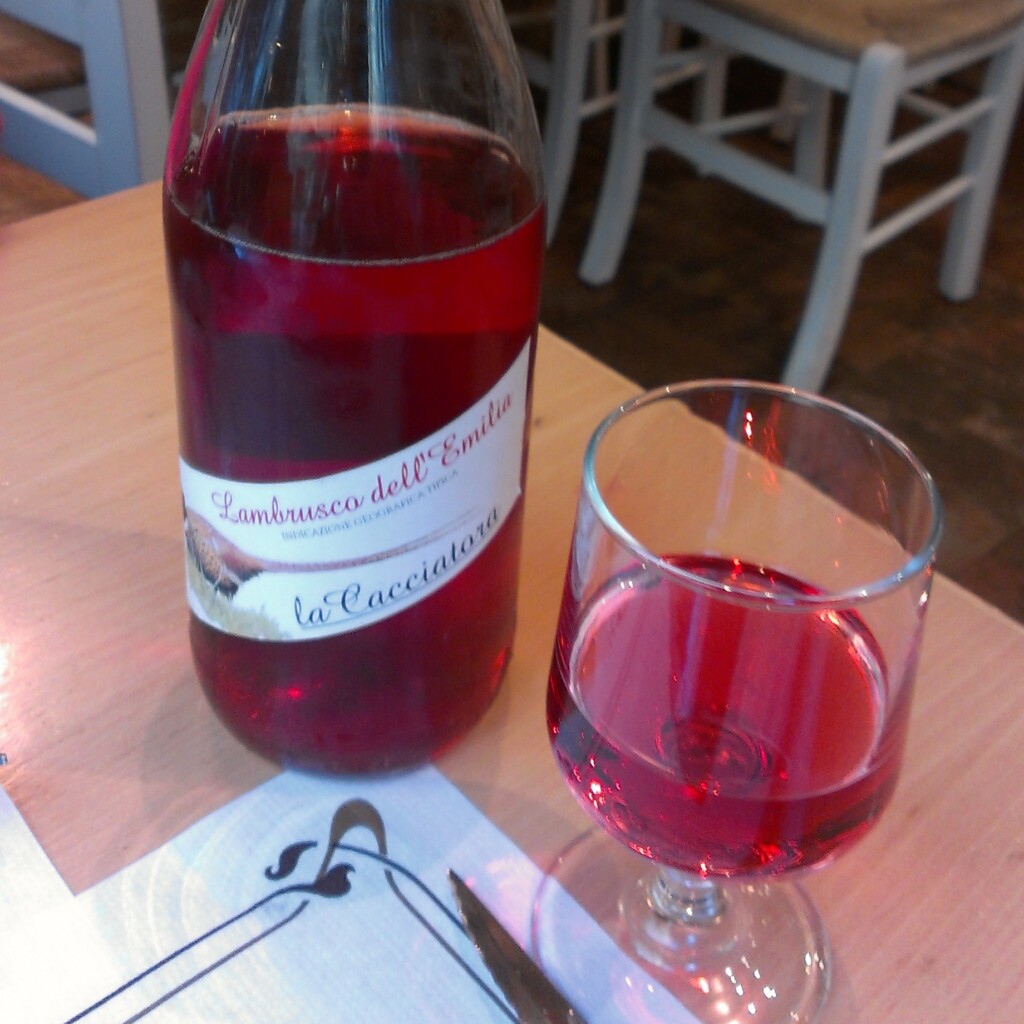 The Rosé wine of the French retains a light pink hue. In Spain, for example, the shades vary so much to the point of being confused with red. The secret is to know how to achieve a natural rosé color without detracting from the acidity and primary essence of Rosé. Among the shades, the following stand out:
The Rosé wine of the French retains a light pink hue. In Spain, for example, the shades vary so much to the point of being confused with red. The secret is to know how to achieve a natural rosé color without detracting from the acidity and primary essence of Rosé. Among the shades, the following stand out:
- Claret
- Violet
- Raspberry
- Peony
- Pink
- Yellowish
- Tomato red
- Variations of salmon and gray.
Aroma and taste of Rosé Wine
In terms of flavor and aroma a good Rosato is tasted and recognized by its fruit flavor: melon, patilla or watermelon, lemon, orange, cambur or banana, in combination with red fruits; blueberry, strawberry, cherry and blackberry.
It is like picking up a little bit of red and white wine in the same glass. It is a perfect blend of sweetness, freshness and acidity with the aroma of summer and new things.
Alcohol content of Rosé Wine
The alcoholic content of Rosato wine can vary between 10 and 12°. It is worth mentioning that for each liter of this liqueur, 8.70° centiliters are of alcohol, so moderation should be exercised.
Types of Rosé Wines
Rosé wines are usually considered young wines because they do not spend much time in barrels compared to red and white wines.
They last a minimum of 6 months and a maximum of 24 months in oak barrels. That is why their complexity when studied is exciting.
Dry cut
It is the most famous in presentation and production, besides being traditional par excellence. It is characterized from the others by being a blend of 2 or 3 types of grapes, being common Tempranillo, Cabernet Sauvignon and Merlot.
Sweet cut
This is achieved by not allowing the elaboration process to accomplish a complete fermentation of the sugar when it is mixed with the alcohol. They are not so common, but you can find them under the presentation of Merlot or Garnacha.
Rosé Wine Pairing
This wine is ideal to be combined with Italian cuisine: stews, meats and pasta. It is also an excellent accompaniment to cheeses, especially soft cheeses.
Seafood paired with a purple rosé is an excellent combination. Do not hesitate to pair it also with fish, in this case we recommend one with a fruity flavor and aroma. 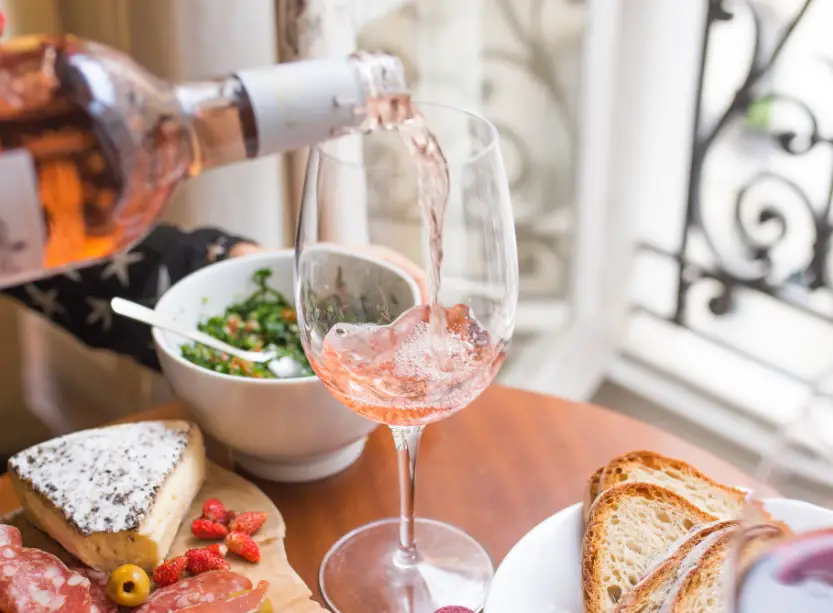 They are excellent in dishes with rice, such as paella. To be combined with salads, we recommend the dry cut. And if you thought that was all, no! This wine can also be combined with sweets.
They are excellent in dishes with rice, such as paella. To be combined with salads, we recommend the dry cut. And if you thought that was all, no! This wine can also be combined with sweets.
how to drink Rosé Wine?
The ideal glass for this wine is the one used with white wines, the so-called Bordeaux glass, since its not very large size allows it not to lose its aroma and freshness.
It should not be too elongated as it would over aerate, not allowing the wine to taste all its minerals while tasting.
how is Rosato Wine made?
Although it may seem strange, the elaboration of Rosé wine is more complex than that of white wine and this is due to the fact that its maceration process is longer at the beginning of its preparation. Here are the types of elaboration:
How to elaborate Rosé wine by Maceration
This is how this type of wine is traditionally made. It is a process where the juice is left in contact with the grape skin to extract the maximum color, aroma and taste of the fruit, this period is usually short, but it will depend on the wishes of the winemaker; it can be from hours to several days.
All this is done with the intention of subtracting the tannin from the skin before it is removed.
For the maceration process, the juice is not pressed if light grapes such as Garnacha, which contains a lower concentration of anthocyanins (color) in its skins, are to be used, so they do require more time macerating so that there is a total extraction of anthocyanins resulting in a good Rosato wine.
Now, if the Syrah variety is to be used, the pressing technique is ideal, since this type of grape releases the anthocyanins necessary for a wine that is light and smooth in texture and color. The longer the maceration time to which the fruit is subjected, the greater the color for a good rosé wine.
How to elaborate rosé wine by Vin Gris
This is the name given when the red grape is processed to make a rosé wine in light tones, almost becoming grayish white.
Its color is very faint, almost imperceptible, and to achieve this tone, the berries are removed from the skin to prevent them from releasing their color and flavor.
Its process is the same as that of white wine; it is pressed and left for a short maceration time to reduce the extraction of color, without going through aging, but directly to barrels for bottling.
How to elaborate rosé wine by bleeding
This technique was discovered because Rosato wine can be achieved as a by-product of red wine fermentation through bleeding, which consists of having a greater presence of phenolics (color and flavor) in the red wine.
During the maceration time of the red wine, 10% or more of this pink juice is removed. The leftover red wine is intensified by reducing its original volume, creating a more intense red wine.
The previously extracted rosé juice is then fermented to produce a rosé wine with a more intense hue, i.e., this variation is usually darker and more flavorful on the palate.
How to elaborate Rosé wine by Tearing method
This process is so called because it is when the grapes are not touched in any way, i.e., they are not crushed. Its elaboration occurs naturally, it can be helped with a light pressing, but the grapes naturally, because they are placed in barrels and the weight of the bunches themselves, bounces the color and the juice.
Rosé wine nutritional characteristics
Rosato wine is considered a low fat wine. It is also rich in minerals from grapes such as iron, calcium, magnesium, vitamin A, B1, B2, B3, B5, B6, C, D, E, K, phosphorus, among others.
Rosé Wine Temperature
Rosé wine is ideal to be consumed at a temperature of 7 to 10º for its refreshing flavor and fruity aroma.
Rosé Wine Price
Rosato wine is ideal for the summer, so its commercialization is continuous. Its price ranges from 6.15 to 14.10 euros, depending on the brand and aging time.
Best Rosé Wine Brands
When choosing a good rosé wine, we must take into account which are the best based on its production and sale, therefore, we bring you what we consider the 10 best rosé wine brands:
- Le Rosé De Antidote
- Flor de Muga
- Mara Moura Bastardo
- Marqués de Murrieta First Rosé
- Regina
- Chivite Colección 125
- Rioja Vega Tempranillo
- Impromptu Rosé
- Lalomba
- Alagú

